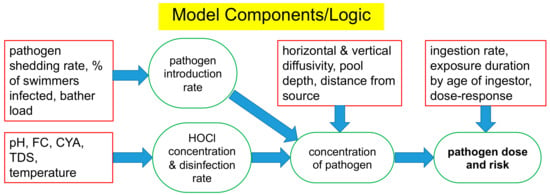I do believe that there is some sort of elevated chlorine level in the cell and probably in the pipes leading to the pool. Whether that's high enough to be called "super chlorination" is another question. But it certainly won't hurt in giving algae an extra knock. The water behind the cell must have a higher FC compared to the incoming water - how would it otherwise be possible to increase the overall pool-FC. But yes, super chlorination might be an exaggeration. Don't know.
Regarding pH, you have to consider the local pH distribution within the cell. Right at the cathode, pH will be elevated, with each H
2 two OH
- will be created. At the anode, or shortly after, the reaction of the generated Cl
2 gas with H
2O (forming the precious HOCl) will release one H
+, reducing the pH around the anode. Scale building around the cathode, and switching polarity from time to time helping to minimise scale built-up (because existing scale will be exposed to a more acidic environment) is evidence for these local pH zones.
The H
+ from the anode will compensate some of the pH-increase from the cathode once these waters mix again. But the overall pH behind the cell should be elevated to a certain degree compared to the main pool water. Because of the constant fresh water supply, the overall pH in the cell is probably not much higher. Maybe not enough to see a direct difference to the pool pH, but there must be a difference - that's just what the chemistry of creating chlorine with a SWG does. Chem Geek described it in his
water chemistry thread as "This process is partly basic, but not strongly so due to the HOCl weak acid."
I assume that Insrg have chosen a location within the cell for their pH-probe far enough away from the electrodes to show the bulk-cell-pH rather than the pH directly next to the plates.
I once found a
paper that shows the pH-distribution within an electrolysis cell. It's a slightly different situation, but I believe that the general effect is transferable. This is the relevant
diagram in the paper.
I wholeheartedly agree with you (
@AUSpool) in regards to the constant and reliable chlorination with a SWG playing a role in allowing lower FC-levels. I actually was about to mention that in my previous thread, but decided that I should better start cooking dinner rather than making an already too long post even longer.
It would be interesting to see if pools with a Stenner system will also allow lower chlorine levels. Don't know if we have reliable field data on that.


